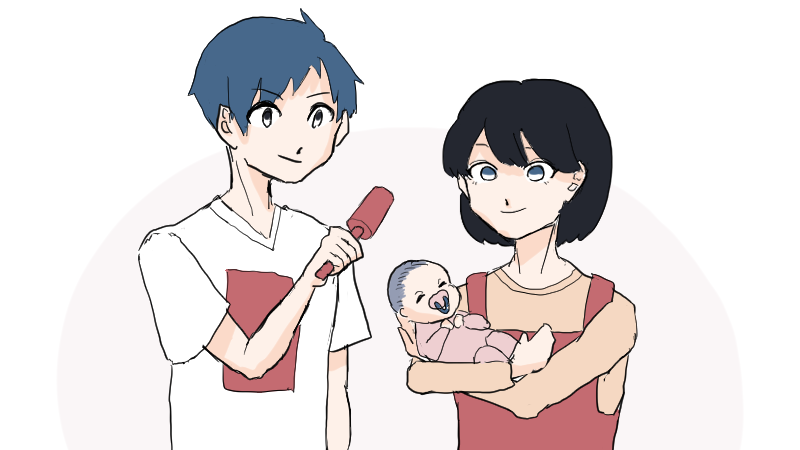Child Care and Family Care Leave Law
The Child Care and Family Care Leave Law is a law designed to help workers who have to balance child care and family care with work at the company. It mainly describes specific measures to support flexible working styles and the acquisition of childcare and nursing care leave. There are also regulations that require employers to respond to workers' requests.

Matters stipulated in the Child Care and Family Care Leave Law
Under this law, employees are able to take leave from work before and after childbirth, take child care leave, take sick/injured child care leave, and able to require thier employers to take into consideration of employee's family members when they are transferred. As for nursing family members, employees are able to take family care leave.
On the other hand, employers are required to restrict overtime work and late-night work, and to establish a shorter working hour system. In the past, there was a strong tendency to "Women take maternity leave and men do not." but in recent years, there has been an increase in the number of men taking leave. Naturally, support for men taking family care leave is also being promoted.

Under this law, workers have the right to apply for absence from work and short working hours. The law prohibits employers from rejecting such requests or imposing penalties.
Background to the enactment of the Child Care and Family Care Leave Law
With the declining birthrate and aging population in recent years, workers need to have stable childcare and family care leave systems. It is also important for the government to stable childcare and nursing care for workers, that the goverment regards as the foundation of the nation. Companies need a clear system to anticipate and compensate for vacancies caused by absence from work. These interests worked together and led to the enactment of the law.
Revision of the law in January 2017
In the previous revision of the law, measures were taken to widen the scope of employees taking leave, mainly by revising family care leave.
(a) Allow employees to take separate family care leave
In principle, applications can be submitted up to 93 days per year that was on the condition of once a year, but now applications can be devided up to three times per year. This allows flexible leave applications.
(b) Enable application for nursing leave for children
The application for leave of absence has been changed more flexibly for this reason when nursing care is needed for a child's illness. Up to five days a year, employees was able to take leave in units of one day, but now in units of half a day.
(c) Relaxation of conditions for taking child care leave
With regard to fixed-term contract employees, it was necessary for them to take childcare leave under the condition that "Working for more than one year in the past, being employed after the child turns one year old, and not being expired the employment contract within nine months of the start of the leave.". After the revision, the condition within nine months was removed, and "Working for more than one year in the past, and not being expired the employment contract until the child turns 18 months old" became a condition.
The Equal Employment Opportunity Law aims to ensure equal opportunities and treatment for men and women and to ensure health care during pregnancy and after childbirth.
At the time of the enforcement of the law, it was a provision for efforts, but after the law was revised, it became a provision for prohibition, and various contents were added.